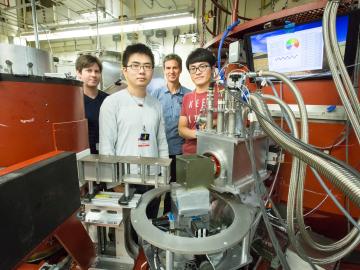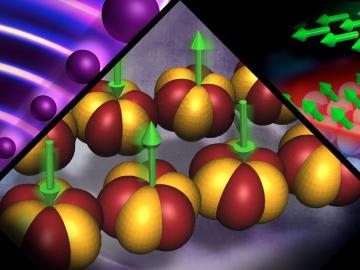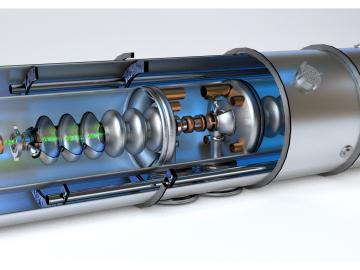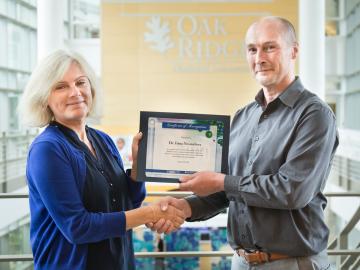
Filter News
Area of Research
- (-) Fusion Energy (7)
- (-) Neutron Science (94)
- (-) Supercomputing (160)
- Advanced Manufacturing (5)
- Biological Systems (1)
- Biology and Environment (103)
- Biology and Soft Matter (4)
- Building Technologies (2)
- Chemical and Engineering Materials (3)
- Chemistry and Physics at Interfaces (7)
- Computational Biology (1)
- Computational Chemistry (5)
- Computational Engineering (1)
- Computer Science (3)
- Data (1)
- Electricity and Smart Grid (1)
- Energy Frontier Research Centers (7)
- Energy Science (169)
- Fuel Cycle Science and Technology (2)
- Functional Materials for Energy (8)
- Fusion and Fission (33)
- Geographic Information Science and Technology (1)
- Isotopes (22)
- Materials (122)
- Materials for Computing (13)
- Materials Synthesis from Atoms to Systems (8)
- Materials Under Extremes (7)
- National Security (45)
- Neutron Data Analysis and Visualization (2)
- Nuclear Science and Technology (27)
- Quantum Condensed Matter (3)
- Quantum information Science (4)
- Sensors and Controls (2)
- Transportation Systems (4)
News Type
News Topics
- 3-D Printing/Advanced Manufacturing (4)
- Artificial Intelligence (23)
- Big Data (16)
- Bioenergy (6)
- Biology (8)
- Biomedical (13)
- Biotechnology (1)
- Buildings (2)
- Chemical Sciences (2)
- Clean Water (2)
- Computer Science (48)
- Coronavirus (9)
- Cybersecurity (2)
- Energy Storage (3)
- Environment (17)
- Exascale Computing (16)
- Fossil Energy (1)
- Frontier (17)
- Fusion (5)
- Grid (1)
- High-Performance Computing (25)
- Hydropower (1)
- Isotopes (1)
- Machine Learning (10)
- Materials (10)
- Materials Science (13)
- Mathematics (2)
- Microscopy (2)
- Nanotechnology (6)
- National Security (3)
- Neutron Science (56)
- Nuclear Energy (7)
- Physics (5)
- Polymers (1)
- Quantum Computing (11)
- Quantum Science (11)
- Security (3)
- Simulation (12)
- Software (1)
- Space Exploration (2)
- Summit (22)
- Transportation (4)
Media Contacts

The U.S. Department of Energy’s Office of Science announced 55 projects with high potential for accelerating discovery through its Innovative and Novel Computational Impact on Theory and Experiment (INCITE) program. These awards allocate the multi-petascale computing resources at Argonne and Oak Ridge National Laboratories, two of America’s most powerful supercomputers dedicated to open science.




The theories recognized with this year’s Nobel Prize in Physics underpin research ongoing at the Department of Energy’s Oak Ridge National Laboratory, where scientists are using neutrons as a probe to seek new materials with extraordinary properties for applications such as next-generation electronics, superconductors, and quantum computing.




The Department of Energy’s Oak Ridge National Laboratory will add its computational know-how to the battle against cancer through several new projects recently announced at the White House Cancer Moonshot Summit.

While trying to fatten the atom in 1938, German chemist Otto Hahn accidentally split it instead. This surprising discovery put modern science on the fast track to the atomic age and to the realization of technologies with profound potential for great harm or great help. Altho...


